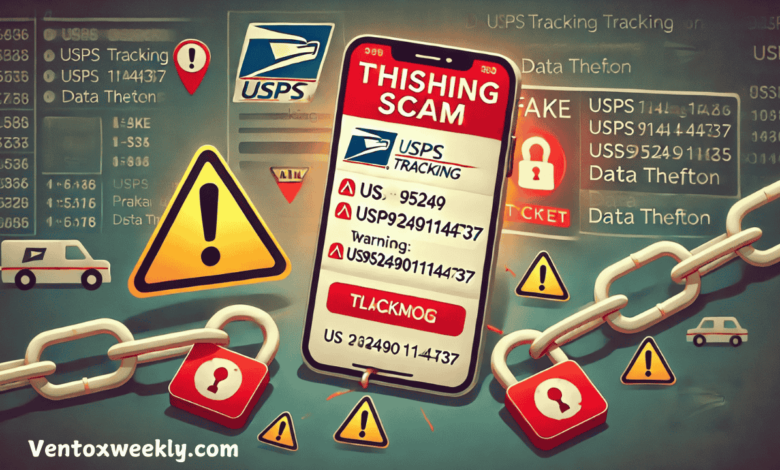Beware of the US9524901144737 Scam: Protect Yourself from Fake USPS Tracking Messages

In today’s digital age, scammers have become increasingly sophisticated, finding new ways to deceive people online. One such phishing scam revolves around the fake tracking number US9524901144737, widely used in fraudulent communications posing as official messages from the United States Postal Service (USPS). This article will provide an in-depth look into the US9524901144737 scam, explain how it works, and provide helpful advice to keep you secure.
What is the US9524901144737 Scam?
The US9524901144737 scam involves deceptive emails or text messages pretending to be from USPS, claiming that a package delivery failed due to an incorrect or unknown address. The letter requests that the receiver click a link to update delivery details or reschedule the package delivery. However, these links direct users to phishing websites that steal personal and financial information.
How the Scam Works
The scam follows a structured pattern designed to deceive unwary victims into disclosing private information:
- Fake Communication:
- A message by SMS or email is delivered to the victim with a tracking number, US9524901144737, claiming a failed delivery attempt. It may read:
- “Your package could not be delivered. Please update your address here to schedule redelivery.”
- The messages often appear urgent, pressuring users to act immediately.
- Malicious Link:
- The included link leads to a fake USPS website. These counterfeit sites mimic USPS’s official design, including fonts, colors, and logos, making them hard to distinguish from the website.
- Data Harvesting:
- Once on the fake site, the user is asked to enter personal details (e.g., name, phone number, address). Sometimes, a small redelivery fee is requested, prompting the victim to enter credit card details.
- Fraudulent Use of Data:
- The information gathered is either sold on the dark web or used directly for identity theft, unauthorized purchases, and other fraudulent activities.
Key Warning Signs of the US9524901144737 Scam
To prevent falling for this scam, it is essential to recognize the following red flags:
- Unexpected Delivery notifications:
- You receive a message about a package that you were not expecting.
- Generic Greetings:
- Phishing emails often use vague salutations like “Dear Customer” instead of your name.
- Urgency and Threats:
- The message creates a sense of urgency, prompting you to act quickly without thinking.
- Suspicious URLs:
- The provided links may resemble USPS URLs but with subtle differences (e.g., USPS-secure365.com). Always hover over the link to inspect the actual URL before clicking.
- Poor Grammar and Formatting:
- Legitimate USPS communications are usually error-free, whereas phishing emails often contain spelling and grammar mistakes.
- Requests for Personal Information:
- USPS will never ask for personal or financial details through unsolicited emails or text messages.
Steps to Take If You Encounter the US9524901144737 Scam
If you receive a suspicious message involving the US9524901144737 tracking number, follow these steps to stay safe:
Do Not Click Links or Open Attachments
- Avoid interacting with any suspicious messages. Do not click on the provided links or download attachments from unknown sources.
Verify Tracking Information on USPS’s Official Website
- Visit the USPS website at https://tools.usps.com and enter the tracking number to confirm its authenticity.
Report the Scam
- Forward the suspicious message to spam@uspis.gov, USPS’s official email for reporting phishing attempts. The Federal Trade Commission is another place to report the scam (FTC) or the Internet Crime Complaint Center (IC3).
Monitor Financial Accounts and Credit Reports
- If you enter personal or financial information on the fake website, contact your bank immediately to freeze your accounts and monitor for unauthorized transactions.
Change Passwords and Enable Two-Factor Authentication (2FA)
- If you used the same password across multiple accounts, change them immediately. Activating 2FA provides an additional degree of security.
What to Do If You Have Already Shared Your Information
Victims of the US9524901144737 scam should act quickly to minimize damage:
- Contact Your Bank:
- If you provided credit card details, inform your bank to cancel the card and monitor for suspicious activities.
- Place Fraud Alerts on Credit Reports:
- Contact credit bureaus like Equifax, Experian, and TransUnion to place a fraud alert on your credit file.
- Report Identity Theft:
- Inform the Federal Trade Commission about identity theft to initiate a recovery plan.
- Scan Devices for malware:
- Utilize trustworthy antivirus software to check your gadgets for any malicious programs that may have been installed through the phishing attempt.
How to Protect Yourself from Similar Scams
To avoid falling for scams like US9524901144737, follow these best practices:
- Stay Vigilant with Emails and Text Messages:
- Unsolicited communications should be avoided, especially if they ask for financial or personal information.
- Enable Email Filters and Spam Blockers:
- Use spam filters to block phishing emails from reaching your inbox.
- Educate Yourself and Your Family:
- Keep yourself and your loved ones informed about the latest scams and phishing techniques.
- Use Strong Passwords and Update them Regularly:
- Using solid and one-of-a-kind passwords for every account helps avoid unauthorized access in case of data breaches.
Conclusion
The US9524901144737 scam is a deceptive phishing scheme designed to steal personal and financial information by mimicking USPS tracking notifications. Scammers rely on urgency and fear to trick victims into providing sensitive details. You may defend against phishing attempts by staying informed about how this scam operates and following security best practices.



